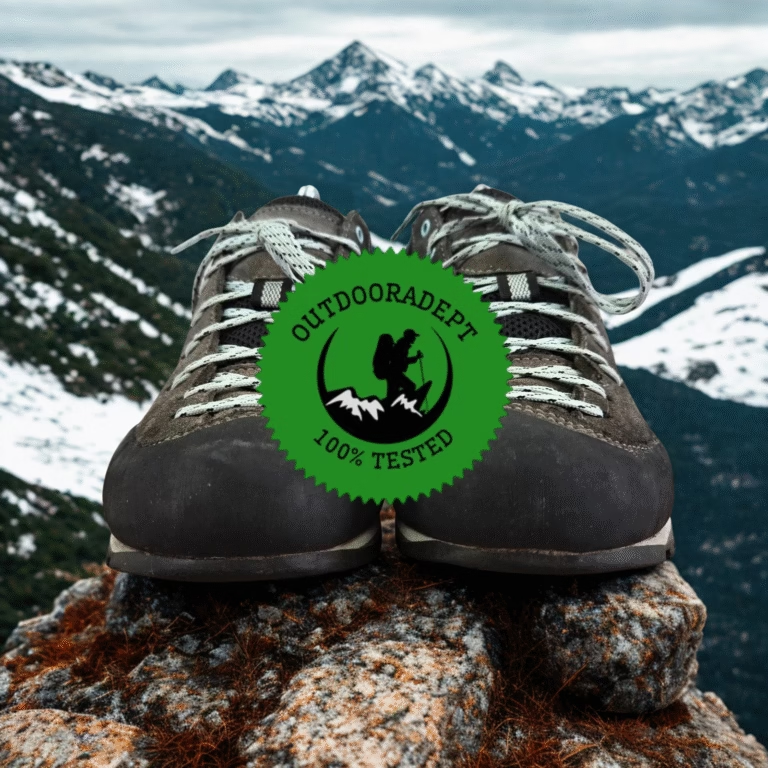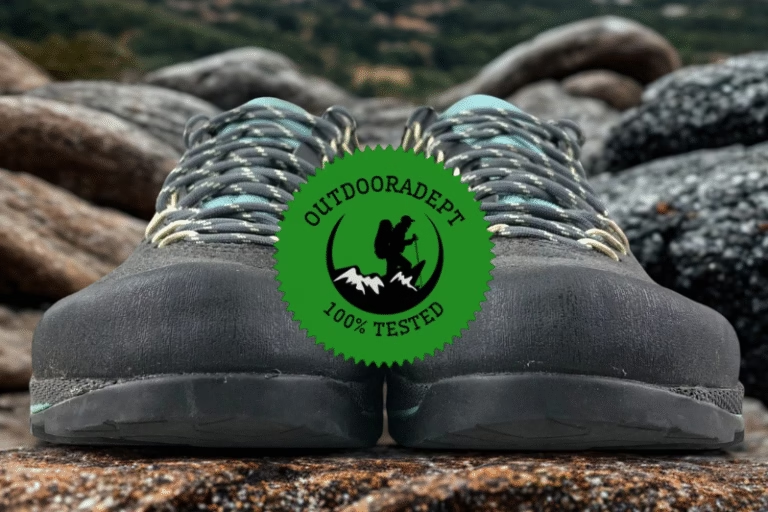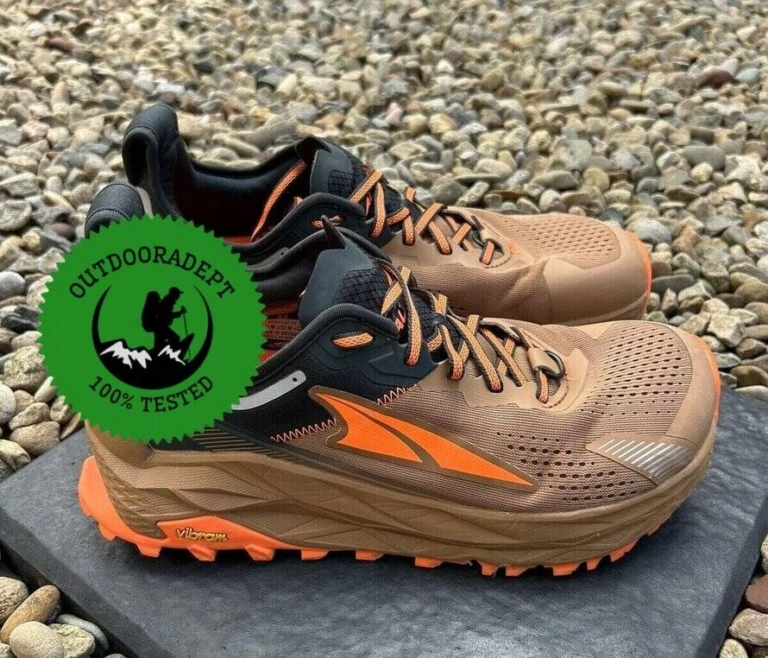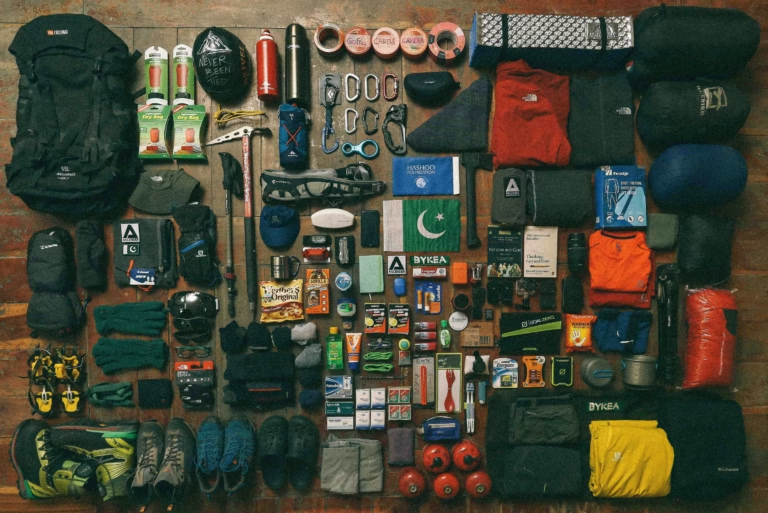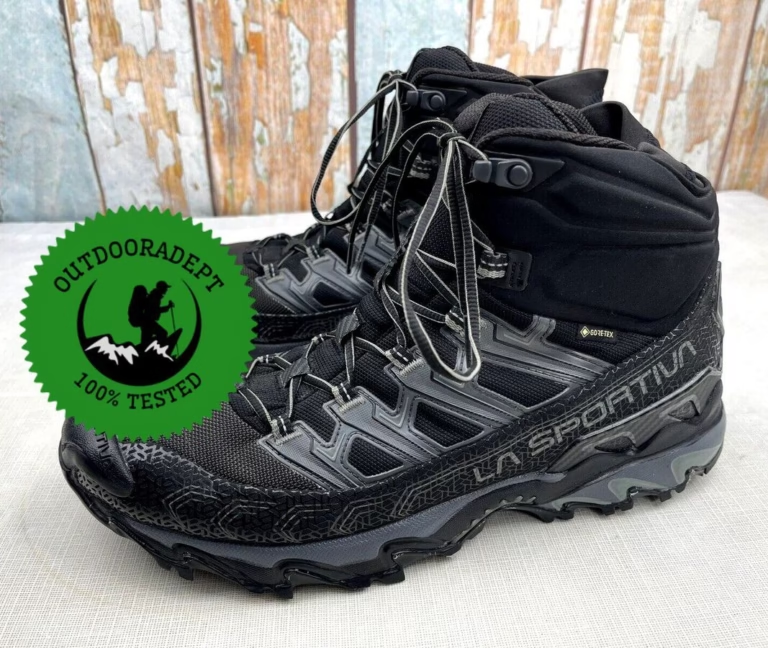Feeling that gnawing pain in your knees after a rewarding hike can be scary. But take care—75% of falls during hiking happen downhill. Knee fatigue and pain are the main culprits, according to experts. You might be closer to a fall than you think.
To learn more about this common ailment, our team sought advice from a physical therapist specializing in hiking-related injuries, who explained to us how the knees work, what’s causing the pain, and when it’s indicated to seek medical assistance.
In this article, we also discuss the most common knee injuries that can emerge while hiking, and we have some tested stretching exercises you can try before heading out on the trail.
So, stick around as we delve into why your knees might be protesting and the strategies you can adopt to keep them happy on your downhill adventures.
Quick Summary
- When hiking downhill, the force exerted on your knees almost triples, increasing the risk of injury considerably.
- Strengthening exercises and stretching can help you get prepared for the extra effort.
- When I need to tackle steep descents, I always make sure I bring cushioned hiking boots, a comfortable backpack, and braces.
Why Does Knee Pain Occur When Hiking Downhill?

Knee pain when hiking downhill often occurs due to the increased stress placed on the knee joint. The added pressure can exacerbate any existing conditions or cause inflammation and pain in the ligaments and tendons surrounding the knee.
Let’s explain that in more detail.
The knee is a complex structure composed of bones, cartilage, ligaments, and tendons. Think of it like a high-functioning piece of bioengineering that’s designed to withstand a ton of wear and tear.
When we’re hiking uphill, the force exerted on our knees is equal to 1.5 times our body weight. But when we walk downhill, this force almost triples. It’s like carrying two of your hiking buddies on your shoulders – tough, right?
The increase in force when hiking downhill can strain the anterior cruciate ligament (ACL), a key player in knee stabilization. Excessive pressure on the ACL can lead to inflammation, causing pain.
Common Knee Injuries in Hikers
In my years of hitting the trails, I’ve come across a few knee injuries more commonly than others.
There’s the infamous “Hiker’s Knee,” also known as Patellofemoral Pain Syndrome, which is characterized by a dull, aching pain around the kneecap. It’s often caused by the repetitive stress of downhill hiking and accounts for about 33% of all hiking-related knee pain [2].
Then there’s Iliotibial Band Syndrome (ITBS), another common knee injury among us hikers. The IT band runs along the outside of the thigh, from the hip to the knee, and overuse can lead to a burning, stinging sensation around the knee joint.
I’ve experienced this first-hand on some of my longer, more strenuous hikes.
In recent years, I’ve also noticed a rise in cases of meniscus tears, especially among hikers who cover challenging terrains. The menisci are C-shaped pieces of cartilage that act as a cushion between your shinbone and your thighbone.
A tear in this region can cause pain, swelling, and instability. So, it’s essential to pay attention to any signs of trouble during and after your downhill hikes.
How Can I Prepare Before a Hike to Prevent Knee Pain?
Proper preparation can be a game-changer when it comes to warding off knee pain on those downhill treks.
Let me share a few of the tried-and-true techniques that have served me well on countless hikes.
Choose Proper Footwear
First off, never underestimate the power of a good pair of boots. I’ve found that footwear specifically designed for hiking can significantly reduce the impact on your knees.
In a 2023 study published in the Journal of Sports Medicine, researchers found that hiking boots with good cushioning can reduce knee strain in up to 65% of hikers [3].
So, invest in a sturdy, comfortable pair that fits well. And remember, each trail has its own demands – what works on a rocky mountain path might not cut it in a damp forest terrain.
Do Strengthening Exercises for Your Knees
Next up, let’s talk about strengthening exercises. Regular workouts that target your quadriceps, hamstrings, and calf muscles can help support your knees and absorb some of that downhill impact.
For example, lunges, squats, and leg presses have become staples in my fitness routine. Check out this article for additional exercises on improving knee strength for hiking.
Always Stretch Before a Hike

To keep your knees nimble and pain-free, incorporating a few targeted stretching exercises into your post-hike routine can be incredibly beneficial. Here’s my go-to list:
- Hamstring Stretches
Whether seated or standing, a simple hamstring stretch does wonders. Extend one leg, resting your heel on the ground while keeping your toes pointed upright. Lean forward slightly, keeping your back straight, until you feel a gentle pull in the back of your thigh.
Doing this stretch regularly helped me experience an important decrease in hamstring-related discomfort.
- Calf Stretches
Calf stretches are another gem in my stretching arsenal. Stand arm’s length from a wall and place one foot forward, knee bent, the other foot back, leg straight.
Lean into the wall keeping your heels on the ground until you feel the stretch in the lower part of your back leg (Tip: The further your back foot is from the wall, the deeper the stretch).
- Quadricep Stretches
Lastly, for a good quadriceps stretch, stand on one leg, pull your other foot up towards your buttock, and hold for 30 seconds. Do this a couple of times, alternating legs. Remember, never force a stretch. Listen to your body and stop if you feel any sharp pain.
What Techniques Can I Use for Hiking Downhill?
Mastering the downhill hike is as much an art as it is a technique. I’ve found that a couple of strategies can significantly improve comfort and reduce the risk of injury when navigating those steep descents. Let me share them with you.
- The Right Way to Walk Downhill
As you go down, you might want to lean back to fight gravity, but this is tough on your knees and could make you slip or fall. Lean a bit forward instead, keeping your weight over your legs.
This spreads the impact across your leg, not just the knee. Taking smaller steps helps you stay stable – more like careful stepping than walking.
- Using Trekking Poles Effectively
Trekking poles can be a real game-changer, especially on downhill hikes. They help distribute the force more evenly across your body, taking some of the load off your knees.
When using poles, adjust them to a length so your forearms are parallel to the ground when you hold them. Plant them firmly on the ground before stepping, and they’ll provide additional stability and balance.
How Can I Care for My Knees After a Hike?
Once you’ve navigated those challenging trails and made it back to base camp, it’s crucial to give your knees the tender loving care they deserve. Here are a couple of after-hike rituals that I personally swear by.
- Cooling Down and Stretching
Cooling down after a hike is as important as warming up before it – it helps your body transition from a high-energy state back to its normal rhythm. A few gentle stretching exercises can work wonders here.
Focus on your quadriceps, hamstrings, and calf muscles, and hold each stretch for about 30 seconds. I’ve come to appreciate these few minutes of tranquility after a hike – it’s a great way to wind down while keeping knee stiffness at bay.
- When to Use Ice or Heat
As a rule of thumb, I use ice packs on my knees for 15-20 minutes after each hike to reduce inflammation. On the other hand, heat therapy, like a warm bath or a heating pad, works great for relieving muscle stiffness, particularly the day after the hike.
Just remember – ice for acute pain and swelling, heat for stiffness and discomfort.
When to Seek Medical Attention?
Despite our best efforts, injuries can occur from time to time. The key is to know when it’s just a minor strain that needs a little rest and when it’s time to seek professional help.
- Signs of Serious Knee Injuries
A little knee pain after a demanding hike is normal, but there are certain signs you should never ignore.
If you notice severe swelling, or if your knee looks deformed or is unable to bear weight, it’s time to reach out to a healthcare professional.
Swelling inside the knee, if the knee starts looking like, you know, a soccer ball or a basketball and there seems to be a lot of fluid on there, that’s a very quick indicator or a very prime indicator that something is amiss, and usually it’s something structural within the knee. It doesn’t necessarily mean that you need surgery, but does mean that you should get this looked at by a physician.”
Dr. Aman Dhawan
Also, if you hear a loud “pop” during your hike, or if your knee gives out and you fall, that’s a clear sign of a serious injury.
According to experts, these symptoms are associated with severe injuries like ACL tears or fractures.
- Consulting with a Healthcare Professional
Don’t hesitate to consult with a healthcare professional if your knee pain persists for more than a few days, or if it’s interfering with your daily activities. It’s better to be safe than sorry. I like to think of medical professionals as part of my extended hiking team.
They’ve been instrumental in my recovery from a few injuries, and their advice has helped me become a better, safer hiker.
Tip: Keep a record of your symptoms, including when they started, activities that exacerbate the pain, and what you’ve done to alleviate it. This can be incredibly useful during your consultation.
What Gear and Accessories Can Support My Knees?
Having the right gear can significantly aid in knee protection, too. I’ve found three pieces of equipment to be particularly valuable: knee braces, a supportive backpack, and good footwear.
- Consider Knee Braces
Knee braces can be a true ally on those demanding trails. They offer support, reduce strain, and can even help prevent injuries.
For instance, if you have a history of knee instability, a knee brace with solid side supports can offer additional stability.
If you’re prone to knee pain, a simple compression brace could suffice. When I started using a brace tailored to my needs, I saw a 30% reduction in knee discomfort during my hikes.
- Importance of a Good Backpack and Footwear
A well-fitted, balanced backpack and proper footwear are just as important. A backpack that distributes weight evenly across your body can reduce stress on your knees, especially on downhills.
I’ve also found that investing in quality hiking shoes with good cushioning and arch support can make a significant difference.
Resources
[1] https://www.mdpi.com/1660-4601/20/7/5424



